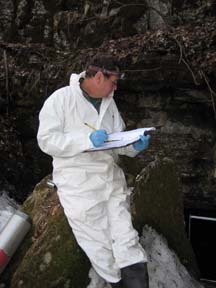 Bats in Vermont are not wearing haute couture gowns, and they are not perusing fine art in Philly, but they are still benefiting from a fashion show and an art show in those locations.
Bats in Vermont are not wearing haute couture gowns, and they are not perusing fine art in Philly, but they are still benefiting from a fashion show and an art show in those locations.
In Vermont, the state Fish and Wildlife Department is the beneficiary of a bat-themed fashion show featuring six local designers. Scott Darling, Vermont’s bat biologist, will be on hand to explain the impact of white nose syndrome on the state’s bats.
Read this Associated Press article in the Bennington Banner. You have to scroll to the bottom of a bunch of jumbled-together stories.
In Philadelphia, a show of bat-themed art is benefiting Bat Conservation International. The show, called “Empty Night Skies,” has already raised thousands of dollars for the organization, according to Philadelphia Weekly, and runs through June 13.
Read the article in Philadelphia Weekly for the details, but be prepared to hold your nose through the first few paragraphs. (Does this guy even know any kids? Today’s generation was brought up with Stellaluna, and in general, thinks bats are cool even — or especially — if they think bats are creepy.)
Photo: Our own bat art, made from a photo of a gray bat from the US Fish and Wildlife Service




